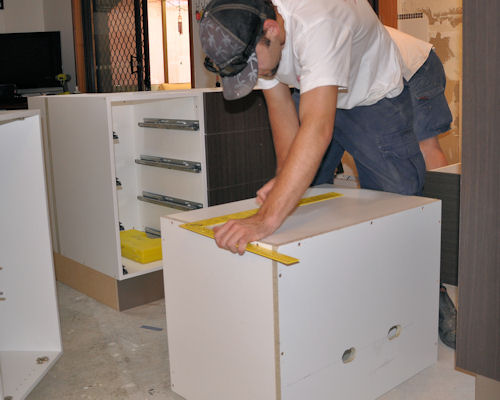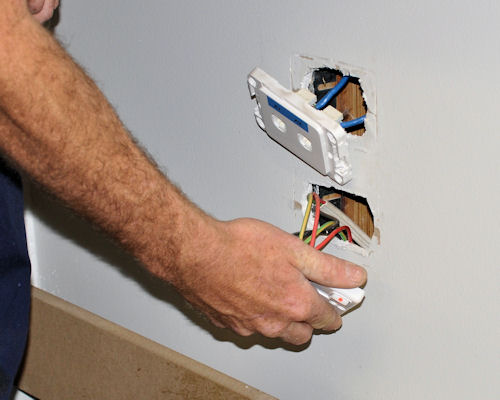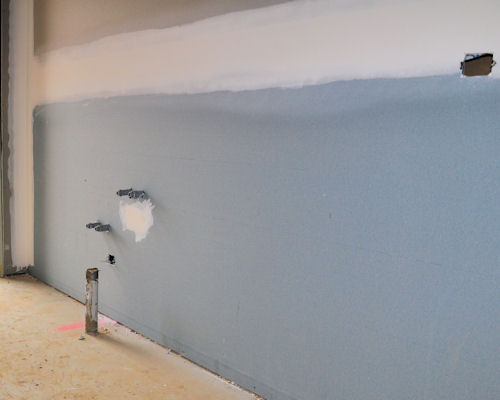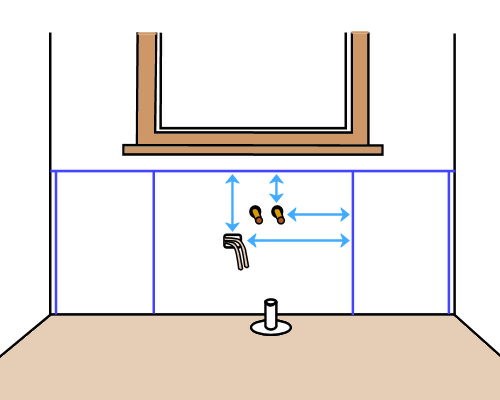Service outlets
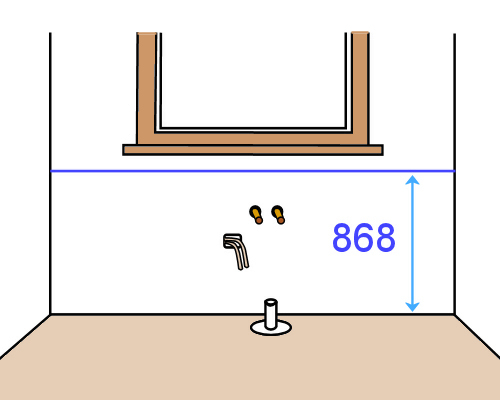 Audio for slide 4 (mp3 |6|KB)
Audio for slide 4 (mp3 |6|KB)
Step 1: Mark the cabinet carcase height
Let's say the finished bench top height is 900 mm above the floor, and the bench top thickness is 32 mm. This means that the cabinet carcases will finish at a height of 868 mm. Draw a level line along the wall wherever the base cabinets will be at that height.

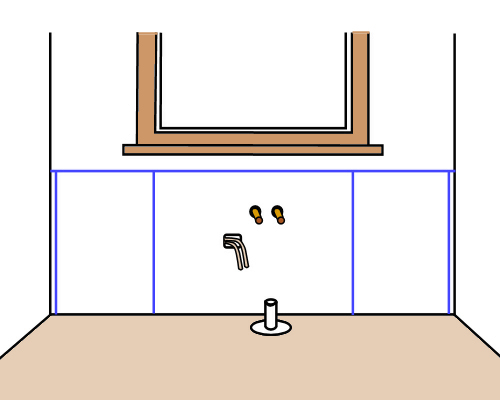 Audio for slide 5 (mp3 |6|KB)
Audio for slide 5 (mp3 |6|KB)
Step 2: Mark the cabinet sides
Use your floor plan to take off the cabinet widths, and mark the plumb lines down the wall, between the level line and the floor. Make sure you build in the correct allowances at the ends for walls that are out of plumb and any filler pieces that might be required, because this will affect the positioning of the cabinets.

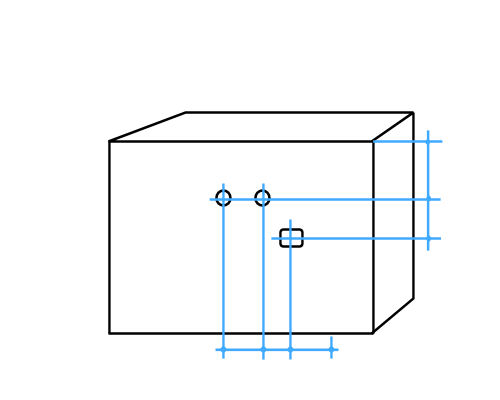 Audio for slide 7 (mp3 |6|KB)
Audio for slide 7 (mp3 |6|KB)
Remember, though, that when you're looking at the back of the cabinet it will be a mirror image of the wall.
Don't make the mistake of marking up the cabinet back-to-front!
Have a look at the Just for fun exercise in this section for some extra practice on this process.

Learning activity
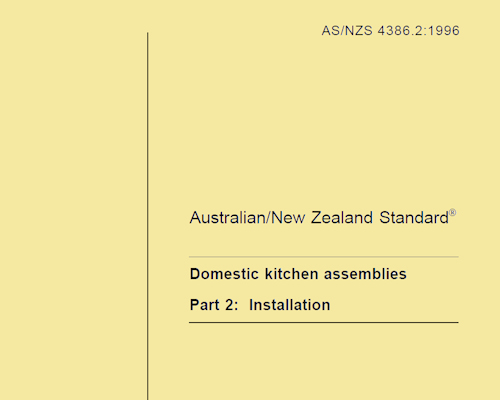 Audio for slide 8 (mp3 |6|KB)
Audio for slide 8 (mp3 |6|KB)
The Australian Standard for Domestic kitchen assemblies contains specifications for the preferred locations of cut-outs for power points, dishwasher connections, vents and ducts, as well as other layout dimensions relating to range hoods, cook tops, splash backs and so on. These are set out in AS/NZS (Australian Standard / new Zealand Standard) 4386.2 under the heading: Appendix A: Coordination of service zones.
Ask your supervisor or trainer if you can borrow the Standard to have a look at the diagrams and specifications. You don't need to memorise them, but it's very useful to know the general principles relating to these dimensions and clearances.



